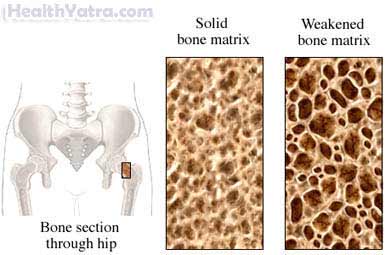Definition
Vitamin D is a fat-soluble vitamin. Fat-soluble vitamins are stored in the body’s liver and fatty tissues. Vitamin D acts as both a vitamin and a hormone. Two of the main sources of vitamin D are food and sunlight. The ultraviolet rays of the sun react with cholesterol present on the skin and create previtamin D3. This compound goes through a series of reactions involving the kidneys and the liver. The final product is vitamin D.
Vitamin D deficiency describes low levels of vitamin D in the blood. This condition can lead to a condition known as rickets in children. In adults, it can lead to osteomalacia. These are two forms of bone diseases that weaken bones. It is important to contact your doctor if you think you have vitamin D deficiency.

Causes
Vitamin D deficiency can be caused by:
- Inadequate intake of vitamin D in the diet
- Lack of sunlight due to:
- Having a darker skin color
- Wearing clothes that cover most of the skin
- Living in northern latitudes during the winter
- Not being exposed to direct sunlight—Sunlight through windows, clothes, or sunscreen-covered skin is not enough for the body to synthesize vitamin D.
- Conditions and procedures that affect the body’s ability to absorb vitamin D from the digestive tract (eg, celiac disease, inflammatory bowel disease, bariatric surgery)
- Conditions or medicines that affect the process of converting vitamin D to a form that the body can use, such as:
- Anti-seizure medicines such (eg, phenobarbital , phenytoin , carbamazepine )
- Other medicines (eg, rifampin , isoniazid , theophylline )
- Severe liver disease
- Chronic kidney disease
- Vitamin-D dependant rickets (an inherited condition)
- Hypoparathyroidsim (underactive parathyroid)
- Nephrotic syndrome (kidney condition)
- Peritoneal dialysis
Risk Factors
Risk factors include:
- Limited sun exposure
- Darker skin color
- Kidney disease
- Restricted activity (eg, due to hospitalization)
- Injury due to a severe burn
- Malabsorption disorder (eg, celiac disease)
- Obesity
- Certain types of diets (eg, macrobiotic diet)
- Liver conditions
- Babies who are breastfed or do not consume enough formula that is fortified with vitamin D
Wearing sunscreen may be a risk factor for vitamin D deficiency. But, organizations like the American Academy of Dermatology (AAD) recommend that you use sunscreen to protect your skin from UV exposure, a known risk factor for skin cancer.
Symptoms
If your vitamin D deficiency is mild to moderate, you may not have any symptoms. If you have a severe deficiency, you may experience:
- Bone and muscle pain
- Muscle weakness
- Hip pain
- Fractures
- Difficulty walking, walking up stairs, and getting out of a chair
- Falls
Diagnosis
Your doctor will ask about your symptoms and medical history. Tests may include the following:
- Blood tests to check vitamin D levels and kidney function
- Bone tests
Treatment
Talk with your doctor about the best plan for you. Treatment options include:
- Vitamin D supplementation—High doses of vitamin D are given for 6-12 weeks. This is followed by a lower dose of the vitamin. The doses are continued until blood levels return to normal.
- Calcium supplementation—Calcium plus vitamin D supplements may be given to increase D levels. This can also improve bone strength in older women with low vitamin D.
- Light therapy—Exposure to sunlight or UV radiation can increase D levels. Vitamin D3 is produced in the skin when it is exposed to these light sources.
Prevention
To prevent vitamin D deficiency, take these steps:
- Eat a healthy diet. Foods are not naturally high in vitamin D. Many foods are enriched with vitamin D, such as milk, juices, and cereal.
- Take a vitamin D supplement if recommended by your doctor. Your baby may need a supplement if he is breastfed or does not consume enough formula that is fortified with vitamin D. Children may also need to take a supplement if they are not getting enough vitamin D in their diets.
- Follow your doctor’s guidelines on getting enough sun exposure.
- If you or a family member has any of the above risk factors, talk to the doctor about other ways to avoid becoming deficient in vitamin D.
